Israel 2016, Days 23-24
Day 23
We left Israel and headed for Jordan this morning. Crossing the border was a little complicated but we got through fairly quickly. We had to clear security on the Israeli side, then again on the Jordan side. But in both cases, the folks there were polite, helpful and did as much as they could to help get us through the process.
 |
| We only had to wait for about 20 mins entering Jordan. The border guard suggested we wait in the Duty Free shop. |
We stayed in Amman for the evening. Before going to our hotel, we visited the folks at The Jordan Evangelical Theological Seminary (JETS). These brothers and sisters are dedicated to bringing the gospel to the Muslim world and equipping men and women to share it and teach the Bible. It's an uphill battle in a relatively hostile environment but God has been blessing them and it seems they have a firm foothold in an area few seminaries have dared to tread. Their campus is under construction but semi-functional for about 200 students with hopes of expanding to serve more in the near future.
 |
| The main building |
 |
| Classrooms are well-appointed but, thankfully, show signs of heavy use. Funding is a perpetual issue for JETS. |
Amman is the capital of Jordan. It's a modern, beautiful city that exhibits a very special tension between being an ultra modern, high-tech capital and a home to Bedouins.
Taken through our bus window
The Jordanian flags are liberally scattered throughout the city.
A fairly posh residential area
A Jordanian air force display
A Bedouin shepherd crossing a busy street...with his flock
We also toured Gerasa, ancient Jerash, before checking into our rooms. Jerash was built near the Zarqa River, known in the Old Testament as the Jabbok River (Gen 3:22, Num 1:24, Dr 2:37, 3:16, Josh 12:2, Judg 11:13). It was an Ammonite city and had a number of temples to pagan gods. When the Romans Captured it in the 1st century, they expanded it and brought a heavy Roman influence to the design of the city while trying to maintain the earlier pagan influences.
Gates to the Roman Hippodrome where they would athletic events and chariot races
This gate was built by the Roman Emperor Hadrian as a victory gate
More evidence of Roman architecture
A public area for celebrations, announcements, meetings, stc.
The Temple of Zeus sits right next to a coliseum
Yes, these are a Jordanian bagpipe band playing in the coliseum
Apparently dancing to bagpipes is common in Jordan?
This is Waleed, our guide in Jordan. He is articulate and well-versed in the history of the region. He took great care of us while we were guests in his country.
Roman columns and ledges
The Damascus Gate, the northern gate to the city, pointing toward Damascus.
Fascinating technology! The Romans built their columns to withstand earthquakes. They placed a lead disc in between sections of the column, allowing the column to sway without breaking. Waleed placed a spoon between the column and its base while having a local man push on the column. The spoon moved up and down! Terry placed his fingers in there and could feel the 30 ft tall column moving
The meeting area from above
The markets near the entrance were colorful
 |
| The Zarqa(Jabbok) River |
We stayed in Amman for the evening. Tomorrow, we will see Ancient Roman Ammon, Mount Nebo and head South for Petra!
Day 24
Our morning started with a tour of Ancient Roman Amman. The city is incredibly old. It has been occupied for most of its history. It's ruins are in a park, which is near the center of the modern city. They show the influence of the Ammonites, the Egyptians, the Greeks, the Romans, and the Byzantine and Ottoman empires.
The entrance to the park show the various names of Amman dating back to the 5th century BC
Part of the park has been built over. The Greek coliseum sits in the middle of a retail/residential district outside the park.
There are a few Bedouin families that actually have houses inside the park
The Temple of Hercules dominates the skyline
An ancient mosque
The interior of the mosque
The ornate ceiling has been restored
The ancient and the modern
Ottoman architecture
A cave/tomb that dates back to 6000 BC
Egyptian carvings
The hand and elbow of a Roman colossus
The museum on the premises claims that these are the earliest recorded statues of human beings, dating back to between 8000 and 6000 BC
We visited the coliseum
Apparently even the ancient coliseum needs maintenance men!
The present viewed through the past.
Further south is the town of Madaba, known as "home of the mosaic". We visited an the St. George Greek Orthodox Church where one of the oldest maps in existence was found. Later, we stopped at a shop where they hand-make mosaics.
Madaba, like so many towns in the region, blends antiquity and modern
Hmmm...I wonder where they got this idea from?
St George's Greek Orthodox Church is understated on the outside
Inside, the famous map is replicated.
The sanctuary is ornate and filled with symbolism and icons.
Outside, a nod to an ancient heritage. This was the land of Moab!
At the mosaic shop, we saw how one was started
Our hostess explained the painstaking detail and skill required to assemble one
One of their prized offerings is a mosaic ostrich egg
A selection of colorful stones used in making mosaics
Our next stop was Mt Nebo, mentioned frequently in Scripture but primarily known for being the mountain from which Moses viewed the Promised Land in Dt 32-34. Moses was not allowed to enter Canaan and died somewhere in the vicinity of Mt. Nebo.
The Franciscans, who own the site, claim Moses is buried here. Scripture says non on knows where Moses was buried.
There's a church at the top of the mountain. It's being renovated and is closed for the time being.
 |
| There's also a museum and gift shop |
This cross sits at the pinnacle
A plaque points out some of the cities that can be seen
The green line across the middle of the Jordan River. The Dead Sea is to the left. The dark spot above the Jordan River is Jericho.






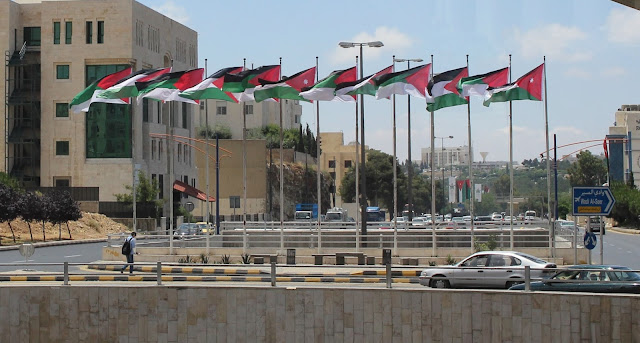


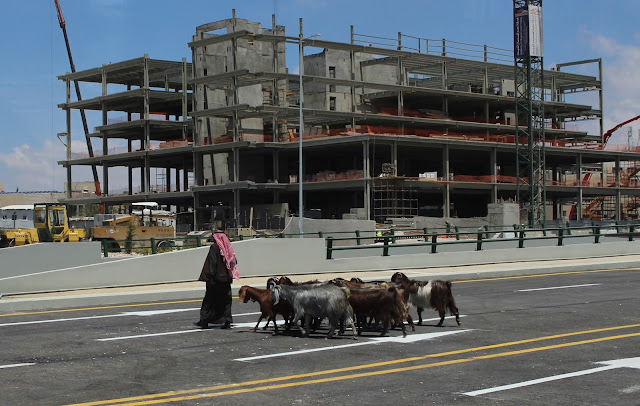


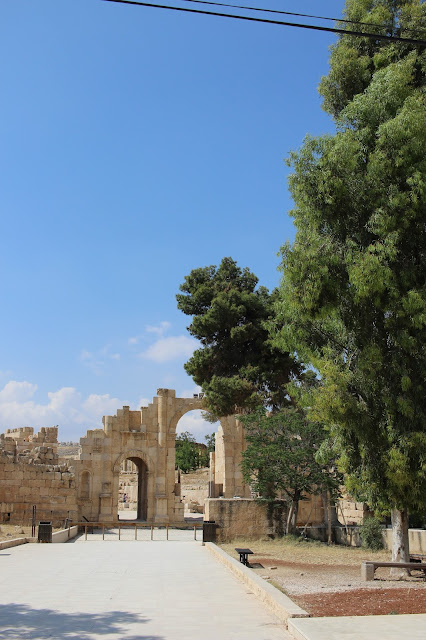












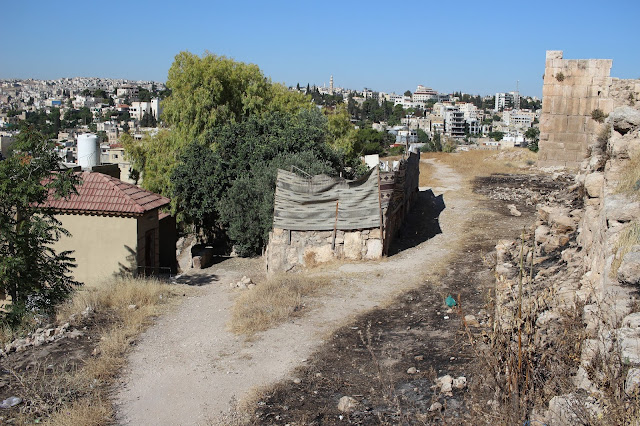


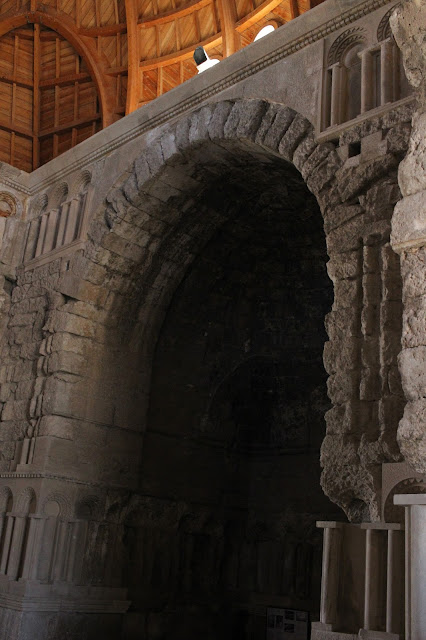



































Amen! (To the point of being with Him)
ReplyDeleteWhat an amazing thing, to look out on what Moses would have seen. Thanks for giving us that same view (without the climb).